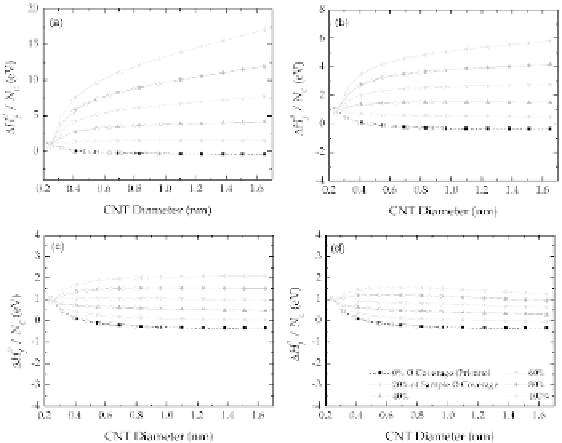Biomedical Engineering Reference
In-Depth Information
be greater for other gas species, making this feature more useful. It
is however possible that the expressions used here for
)
are insufficient to describe this feature, and a more complex term
may either yield more information on this “chiral splitting”, or may
eliminate it all together.
E
(Θ,
R
,
H
ad
Figure 7.13
Relative stability of the four different oxygen adsorption
patterns shown in Fig. 7.11a-d. The results for zigzag CNTs
are shown using the open symbols and results for armchair
nanotubes with solid symbols. The adsorption percentage
corresponds to the fraction of oxygen coverage Θ.
The second example pattern shown in Fig. 7.11b has a
significantly reduced value of Θ
= 1/4 (with respect to the first
pattern described above), but still has all of the C atoms in the
structure sp
max
3
hybridized (
N
= 0). In this case the pattern defines
3
sp
that
(the adsorption site and the three nearest neighbors
of each site), and the affect of this is shown in Fig. 7.12b. Firstly, the
energetic spread of the results and the chiral splitting is reduced
(with respect to the first pattern) but this is simply due to the
reduction of Θ
N
= 4
N
3
sp
H
. Changing the adsorption pattern has, however,
shifted the crossing point slightly to approximately 0.3 nm, which
corresponds to smallest diameter CNTs observed at the center of
multiwalled nanotubes [62]. This shift is also observed in the results
max



